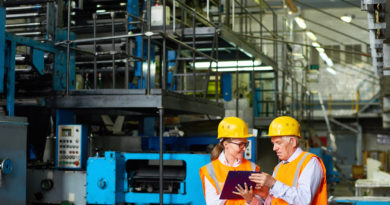Active Heat Sink vs Passive Heat Sink
One of the most commonly used forms of thermal management in technology and machinery systems is heat sinks. These can be used in natural systems, too, and these components are so that they are relatively easy to overlook. Even those familiar with this technology tend to overlook it, but what’s the difference between an active heat sink vs a passive heat sink? And what are heat sinks in the first place? We’re going to take you through all the explanations below.
What is a Heat Sink?
A heat sink is just one component that increases the heat flow moving away from a hot device. These increase the working surface area of the device and the amount of fluid that moves across the larger surface area of a low-temperature. Each device is different, and there are a multitude of sink aesthetics and design capabilities involved in each heat sink. A heat sink is a device most commonly used in a hybrid, passive or active configuration.
Active Heat Sinks vs. Passive Heat Sinks
A passive heat sink relies on natural convection to work correctly. This means that the buoyancy of hot air can cause airflow generated across the heat sink system. A passive heat sink system doesn’t need a secondary power or control system to take the heat away. They are, however, much less effective at moving heat from a system than an active heat sink.
An active heat sink works a little differently to increase fluid flow across the hot area. Most of the time, the air is forced and generated by a blower, or fan and in some cases, movement of the entire object. One of the biggest examples of a fan that blows air across a heat sink can be found in your computer. When you turn it off after it gets warm, the fan moves the air across the heat sink, allowing cooler air to move across the surface. This allows more unheated air to move across the surface of the heat sink.
Lastly, you’ll find hybrid heat sinks. These have a little of the components of a passive heat sink and some of the components of an active heat sink. The configurations are less common because they actively rely on the control systems to cool one based on temperature requirements. If a system then operates at a cooler temperature, the forced air is inactive, with the system being cooled passively. When the higher temperatures are reached, the active cooling system engages. This then increases the cooling capacity of the heat sink system, thus making it a hybrid of the two.
Where can you find heat sinks?
Heat sinks can be found in CPUs in computers. Microcontrollers have built-in heat dissipaters, too. When used in conjunction with a heat sink, onboard chip performances are better! Understanding the difference between a hybrid heat sink, an active heat sink and a passive heat sink is important if you want to understand what they do.




